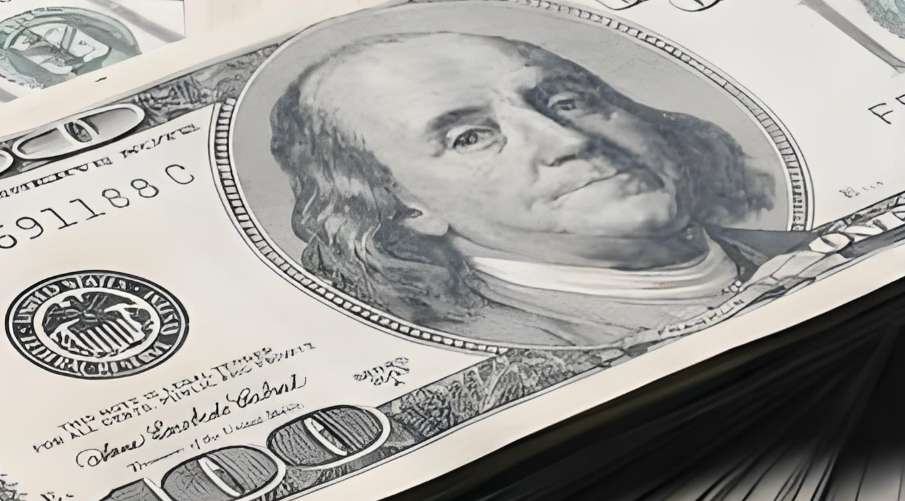The Federal Reserve's Tightening Storm
Advertisements
The recent series of financial decisions made by the Federal Reserve reflect a significant turning point,as the central bank grapples with controlling levels of inflation not seen in four decades.This precarious situation finds its roots in a complex web of economic factors,leading the Fed to take strong and critical measures that might impact the broader economy.
After the Fed's initial move to raise interest rates by 25 basis points in March,the monetary policy meeting held on May 4 resulted in a more drastic measure: a 50 basis point hike.This decision raised the federal funds rate to a range of 0.75% to 1%,marking the first time in 22 years that such an aggressive increase was adopted.The move echoes a similar pattern from 1994,suggesting that the Fed is now leaning firmly towards tightening its monetary policies.
In conjunction with raising interest rates,the Fed announced plans to commence reducing its balance sheet starting in June.This balance sheet reduction is set to initially cap at $47.5 billion per month—$30 billion in U.S.Treasury securities and $17.5 billion in mortgage-backed securities (MBS).By September,these limits are expected to double,leading to a considerable reduction over an extended period.Experts estimate that achieving a balance sheet size equivalent to 20% of nominal GDP might take more than three years,with a projected final total of approximately $5.8 trillion,far surpassing past reductions.
What complicates the situation further is the interplay of high inflation rates,rapid monetary tightening,and the looming threat of an economic downturn.Global markets have reacted with volatility,as evidenced by significant drops in U.S.equities—most notably the S&P 500,which fell below the crucial 4000-point threshold,marking an over 17% decline from its peak.The yield on 10-year U.S.Treasury bonds surged past 3.2%,contributing to immense pressure on non-U.S.currencies amidst a strong dollar.
In confronting runaway inflation,it appears the Fed may need to adopt even more aggressive measures.Projections suggest that merely reaching a neutral federal funds rate of 2.5% may not suffice to rein in inflation towards the 2% target.Analysts now speculate that the benchmark rate might need to surpass 3.5%,embedding the Fed’s actions deeply within a high-stakes scenario.
Jay Powell,the Fed Chair,exudes confidence in the resilience of the U.S.economy,asserting that there remains a viable chance to stabilize prices without triggering a recession or significantly elevating unemployment rates.However,these sentiments may be overly optimistic as the economy adjusts to a new reality after years characterized by low interest rates.The contemplated measures are perhaps a necessary evil,as the Fed aims to tackle inflation at the substantial cost of economic growth.
For China's economy,while the accelerated tightening from the U.S.Fed has injected volatility and pressure on the RMB,the root causes of China's economic challenges lie largely within its own borders.The key to mitigating external shocks appears to be steadily enhancing domestic economic stability as underscored by the government’s commitment to maintaining growth and safety amidst ongoing public health measures.The mantra "Preventing the pandemic,stabilizing the economy,and ensuring development must go hand in hand," highlights this critical approach.
The driving force behind the Fed’s policy tightening is distinctly linked to the steep inflation rate that hit 8.5% in March,a figure not witnessed since 1982.With the consumer price index (CPI) remaining above 7% for months on end,it vastly overshoots the Fed's long-term target.The inflation spike has been described as a result of pandemic-driven supply-demand imbalances, escalating energy costs,and broader price pressures.
escalating energy costs,and broader price pressures.
A significant aspect of this inflationary pressure has been created by the post-pandemic recovery,where,encouraged by expansive monetary policies,consumer demand surged.This spike in demand has been somewhat hindered by a global supply chain struggling to rebound fully from the pandemic,leading to an acute supply shortage.Furthermore,sharp increases in energy prices,compounded by geopolitical tensions,have exacerbated the situation further.For instance,the price of Brent crude oil soared from below $20 per barrel at the height of the pandemic to over $95 per barrel,a trend only exacerbated by recent conflicts that pushed prices to an astounding $139 at one point.
Additionally,rising wages have been a considerable contributing factor as well.The U.S.has seen average wage growth dramatically outpace pre-pandemic levels,with average increases ranging around 5.5% in recent months,nearly double the rates prior to the pandemic.
As the Fed grapples with high inflation levels,former officials and economic analysts raise concerns over the central bank’s potential missteps in timing the tightening of monetary policy.Randal Quarles,a former governor of the Fed,has criticized the institution for not taking more proactive steps to curb inflation when the opportunity arose in September 2021,implying that this hesitation may lead to harsh consequences,notably a recession.
While the economic recovery in the U.S.has shown remarkable resilience,with unemployment claims dropping to pre-pandemic levels and job growth outpacing historical averages,these promising indicators may not be enough to shield it from the adverse effects tied to aggressive interest rate hikes and a contracting balance sheet.
Reflecting on historical context,the Fed’s current tightening resembles that of 1994,where an aggressive interest rate hike strategy proved to be pivotal in navigating inflationary pressures.During that year,the Fed enacted several small rate increases followed by rapid escalations in the following months—a tactic the current administration appears to echo as it contemplates ongoing increases at future meetings.
Across the financial landscape,concerns abound that continued aggressive Fed measures may only serve to exacerbate volatility in stock markets,particularly following the significant fluctuations in the S&P 500 following statements from Powell and subsequent rate hikes.Already characterized by perceived overvaluation,there appears to be a growing apprehension that another aggressive tightening cycle could push the economy into a recession,with the looming question of whether a soft landing is achievable.
Ultimately,how these economic dynamics unfold will not only influence the U.S.economy but could also resonate globally,prompting reactions from emerging markets including China.The interplay between U.S.policies,global economic conditions,and domestic strategies will be vital as nations endeavor to balance their respective economies in increasingly uncertain times.